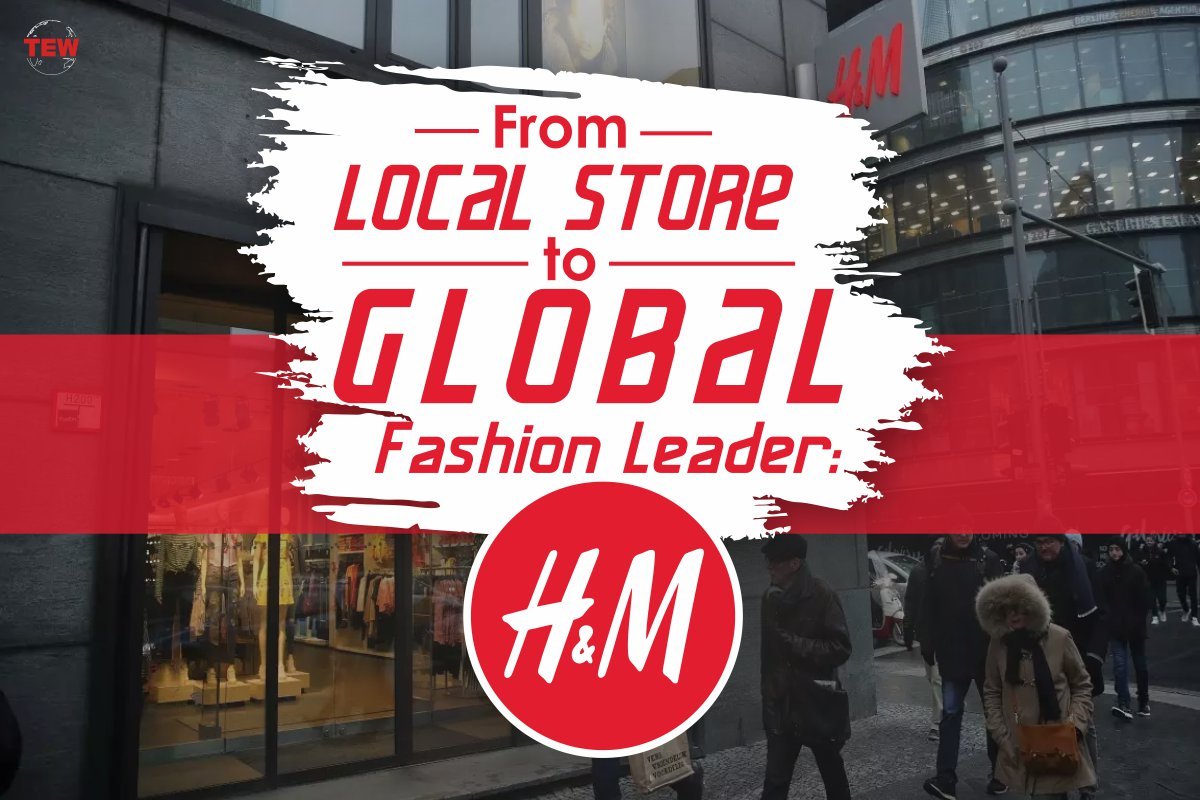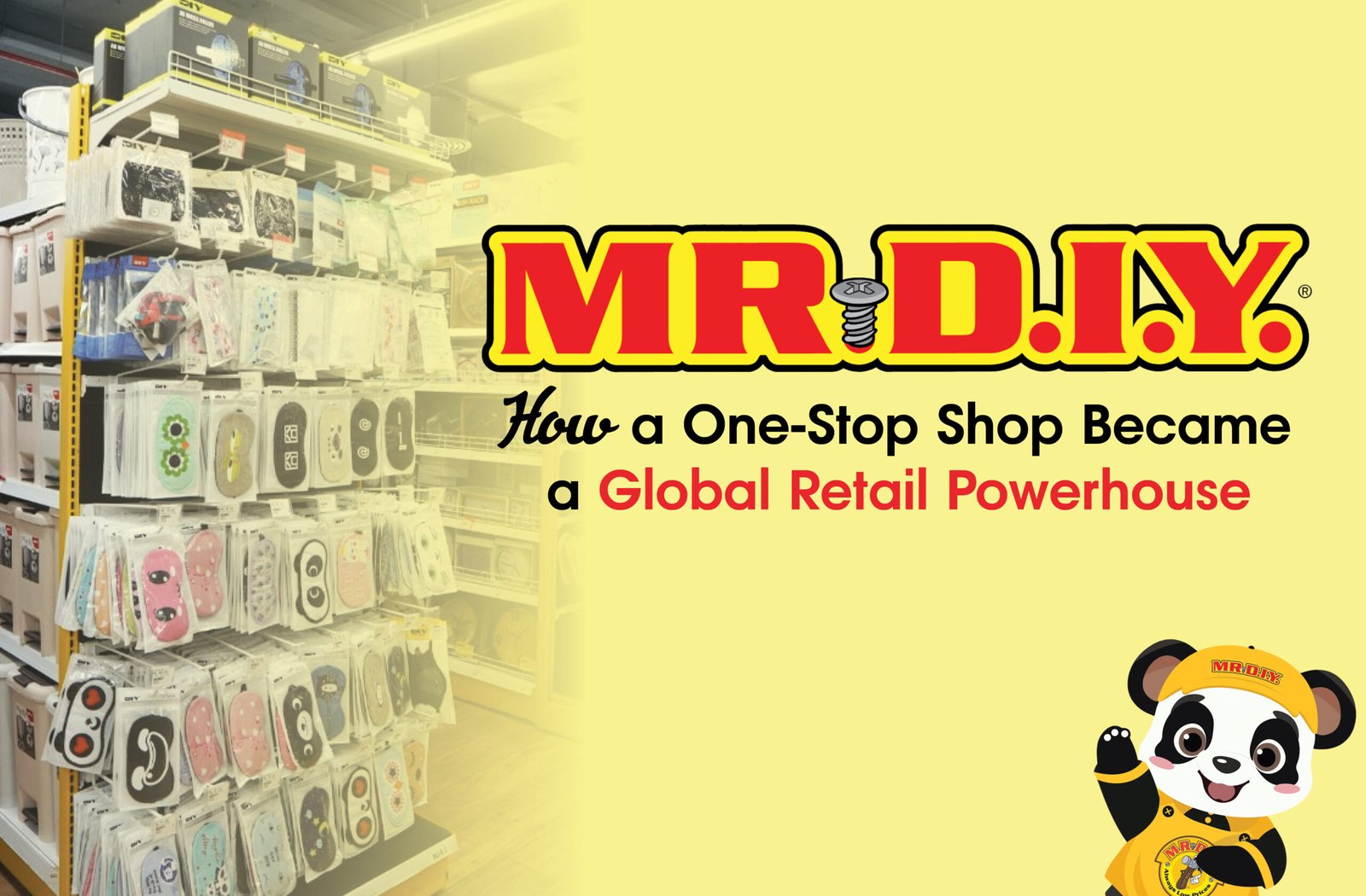Did you know H&M, a renowned international clothing fashion retailer initially originated from a hunting and fishing store? Starting in 1947, today it has grown into a global brand known for its trendy and affordable clothing for men, women, and children. Over the years, there are thousands of retail stores around the globe. It has expanded to every corner of the globe with 4743 stores in over 50 countries making an average sale of 236 Billion SEK each year.
In this article, you will learn about this brand’s enduring legacy, history, challenges, marketing strategies, and influence on the fashion industry.
Brand History of H&M
H&M started in 1947 in Sweden with a women’s clothing store called Hennes, opened by Erling Persson. In 1968, Persson bought a hunting and fishing store named Mauritz Widforss. He started selling men’s and children’s clothes too and renamed the store Hennes & Mauritz, or H&M.
In the 1970s and 1980s, H&M opened more stores across Europe. By the 1990s, they had stores in the U.S. and Asia. It became famous for working with top designers and celebrities in the 2000s.
In the 2010s, H&M started online shopping and introduced the Conscious Collection, focusing on eco-friendly fashion. In the 2020s, it continues to grow worldwide and online, while working hard to be more sustainable.
H&M’s journey shows its goal of making stylish clothes accessible to everyone and caring for the environment.

[Source – mgroup.com]
How Is the Brand H&M Different From Others?
There are 10 major factors that create a huge difference between H&M and the rest of the brands.
- Designing and Production Strategy: H&M relies heavily on outside designers and suppliers to create its clothing collections, which allows it to produce a wide range of styles at low costs. On the other hand, the rest of the brands have different business models, which means they design, produce, and distribute their clothing.
- Store Designing and Layout: It tends to have a more traditional retail layout, with clothing displayed by category, such as men’s, women’s, and children’s clothing. On the other hand, the rest of the brands often have a more experimental layout, with clothing displayed more editorially.
- Follow the Trend-Driven Market: H&M targets a broader market with a wide range of clothing styles and price points, while the rest clothing brands focus on a more fashion-conscious market.
- Affordable Price: H&M’s main differentiator is its ability to offer stylish, fashionable clothes at a lower price point. It opens an opportunity for the middle class to wear modern clothes which indirectly enhances selling rates.
- Focus on Customer Feedback: It trains its employees to ask customers for reviews just after purchasing. This gives an idea to understand the trend and reach out to maximum customers.
- Innovative Marketing: It includes social media campaigns, influencer partnerships, and experimental marketing. These efforts help the brand stay in the marketplace and engage with its target customers effectively.
- Global Presence: Today, it has a vast network in numerous countries, which means customers don’t need to travel long distances to access its brand’s products.
- Sustainability: It is working hard to become a leader in eco-friendly fashion. It has started garment recycling programs where customers can bring back old clothes rather than throwing them in the garbage.
- Online Shopping Experience: It connects its store with online platforms to get the same shopping experience sitting at home. You can shop online, pick up your orders, and return or replace them either online or in a store.
- Fast Fashion Model: It has made a team especially to analyze the trend on social media. This allows it to offer trendy clothing at affordable prices.
What Are the Challenges Faced by H&M?

[Source-www2.hm_.com]
- Fast Fashion: Where fast fashion is a big differentiator it is also a big challenge as well. To keep up with the trend H&M leads to lots of waste and harm to the old environment because old clothes are thrown away.
- Economic Fluctuations: Changes in the economy affect the sales of this brand. When people have no money to spend on clothes, they buy a few clothes which affects their sales.
- Competition: The brand has to constantly work to stay in the market, keep prices low, and give an enjoyable shopping experience to compete with other brands Zara, and online shops like ASOS.
- Expansion in the Global Market: With the increasing demand for the products in different areas the stores need to be expanded which needs lots of effort.
- Digital Experience: Stores need to upgrade their platform each time with the development in technology for customer’s premium experience.
5 Interesting Facts About H&M You Didn’t Know
- In 2017, the store earned the top ranking in the fashion industry by Forbes. H&M prides itself in treating employees well and providing career paths.
- The meaning of the H and M letters in H&M is unique:
- H stands for Hennes, which means “hers” in Swedish. This gave an idea for the women’s clothing store to Erling Persson.
- Persson decided to sell men’s clothes as well so he purchased a hunting store called Mauritz Widforss.
Later on, he renamed his store to sell men’s and women’s clothes together as Hennes & Mauritz (H&M).
- Customers who participate in the clothing recycling programs get an opportunity to win gift cards from $50-$500 in value.
- There is a tradition that when new stores open, all new employees celebrate it by performing a choreographed dance in front of customers and the press.
- Seven out of eleven members of the board are female. The female-driven board helps in auditing finances and other issues that arise. It is also worth to know that eleven members of the board are white.
H&M’s Marketing Strategy to Reach Potential Customers
This strategy involves three stages shortly called STP – Segmentation, Targeting, and Positioning.

[Source-pngwing]
- Segmentation: It targets young adults aged 18 to 35, including children and teenagers. Further, it is segmented within this age group by factors like lifestyle and income.
- Targeting: It primarily targets middle-class people seeking affordable and trendy clothes. Moreover, it focuses on urban dwellers with access to their stores and online presence.
- Positioning: The brand positions itself as “the go-to brand for trendy and affordable fashion”. It showcases their commitment to sustainability and ethical sourcing to attract environmentally conscious customers. This leverages influencers to collaborate and show it on social media to build a sense of community around the brand.
Above this one important factor that works well is collaboration with celebrities. They collaborate with celebrities from high-profile designers like Karl Lagerfeld to pop stars like Beyoncé and Justin Bieber.
Conclusion:
Starting as a small store in Sweden, H&M has become a major player in the global fashion scene. It is known for its fast fashion model, innovative marketing, and commitment to sustainability. Despite facing various challenges it continued to provide clothing products to men, women, and children at affordable prices. H&M is a prime example that shows staying true to your values and adapting to change can lead to remarkable success.


















